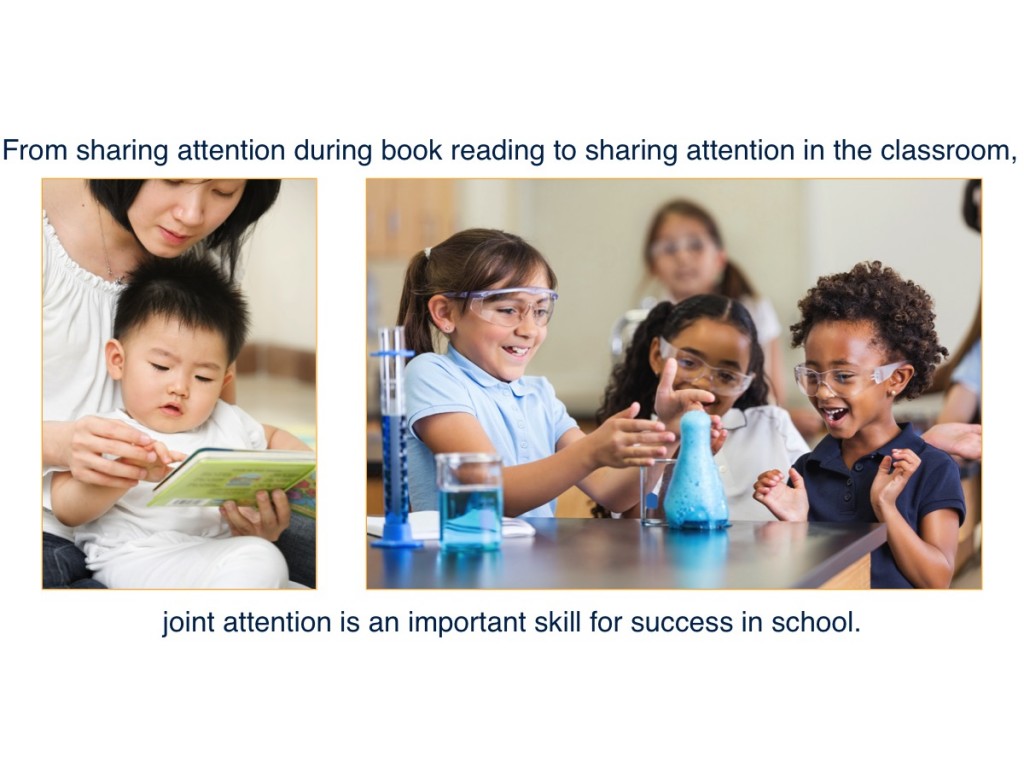
Eye gaze is a simple behavior but it can tell us so much. Before they can even speak, children use eye gaze to communicate. Joint attention helps children develop social understanding in a number of key ways. These include language learning, imitation, emotional development, and mind reading. Children can also follow gaze or direct a person’s gaze to objects in their environment. Adults can label an object to help children learn language. When a child and adult share joint attention to an object, children can learn how the object works. Eye gaze also helps children’s emotional development. Children can follow a person’s eye gaze to see what is making them happy, scared, or angry. Through eye gaze, children begin to understand other people’s desires and interests. They learn that people look at things they want or have interest in.
Joint attention is also important for getting kids ready for school. A big part of social development and school readiness is being able to cooperate with others. To cooperate with others, children need to understand other people’s intentions and goals. Joint attention helps children recognize other people’s goals and future plans. Sharing attention is a lifelong skill that we use daily. It helps not only children, but also adults succeed in relationships, school, and daily life.
-
- Autism Spectrum Disorder (ASD)
- a developmental disorder that impairs a child’s social and communication skills
- Directing attention
- using eye gaze or a gesture to direct another person’s attention to an object or event
- Following attention
- following another person’s eye gaze or gesture
- Gaze following
- looking at what another person is looking at
- Joint attention
- shared attention between social partners to an object or event